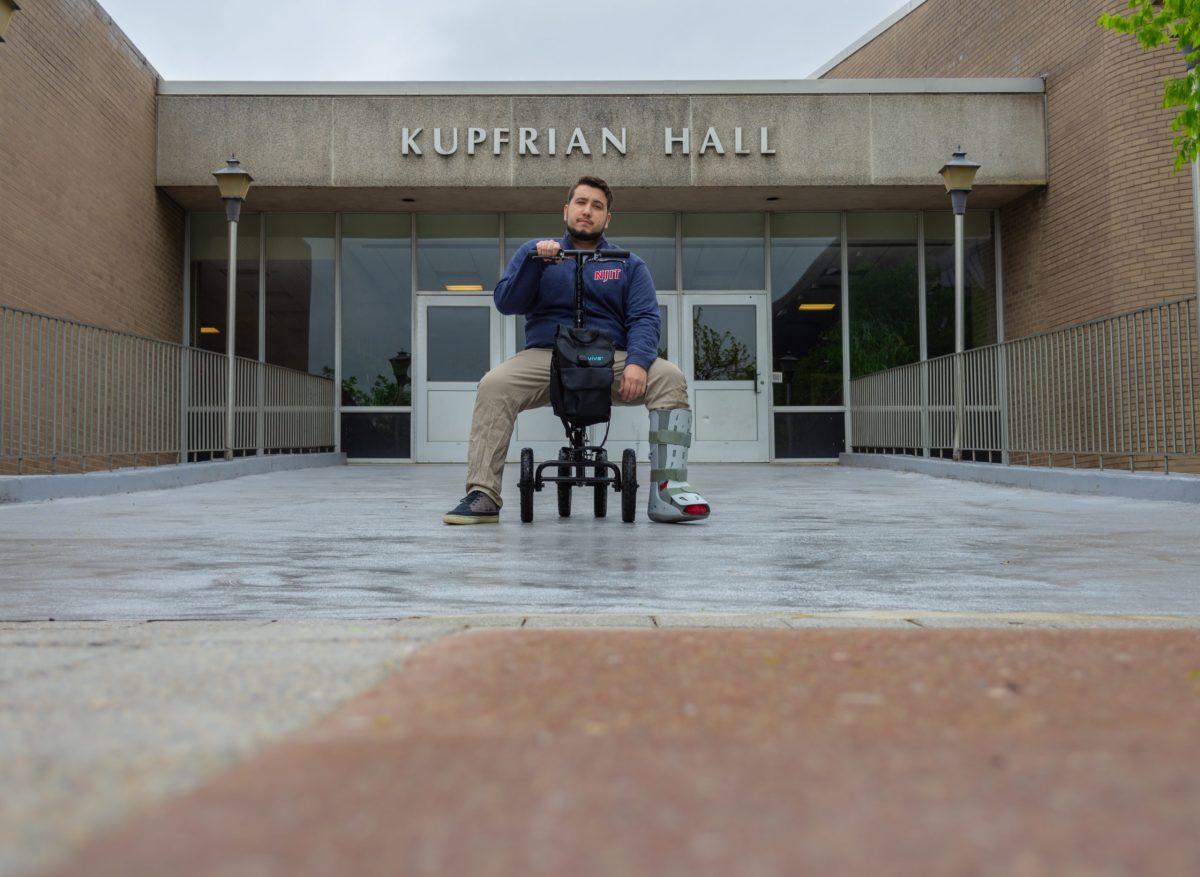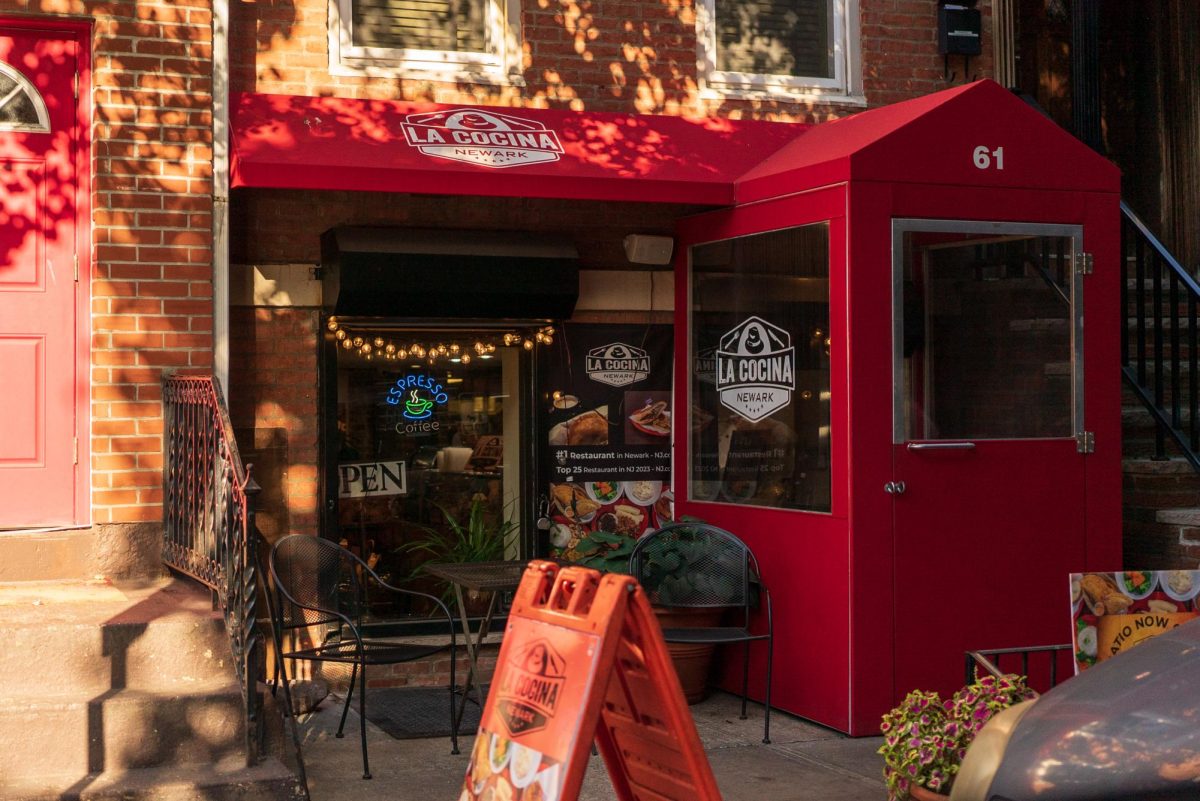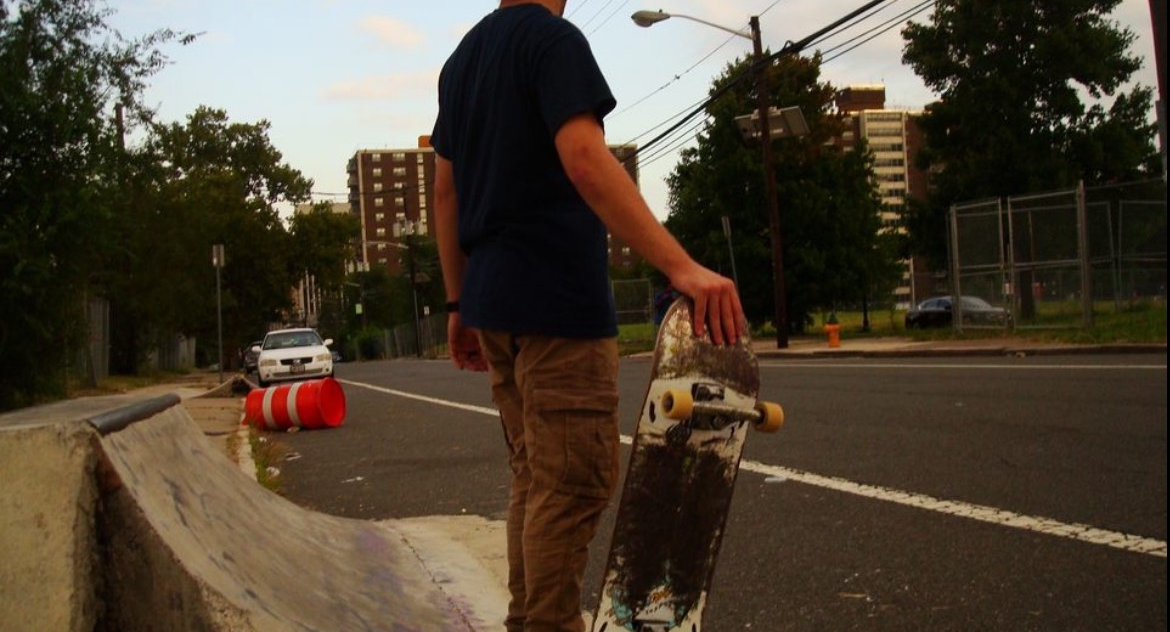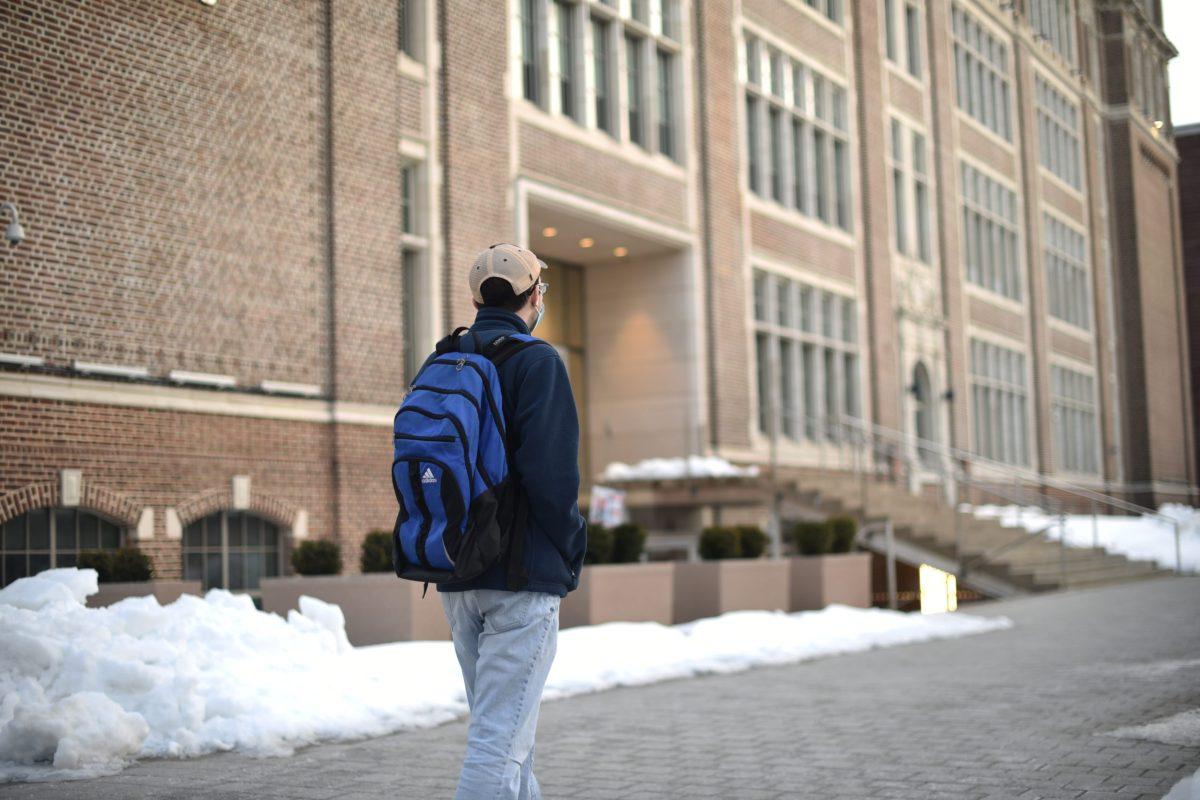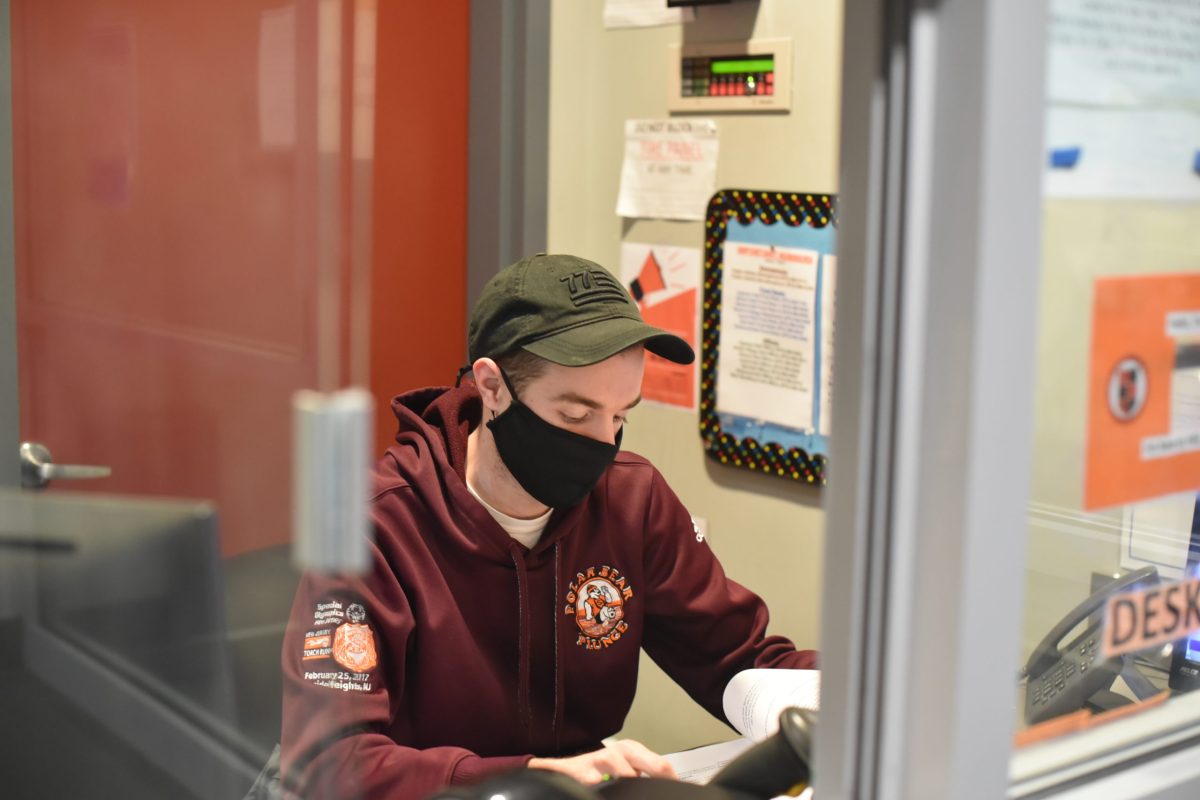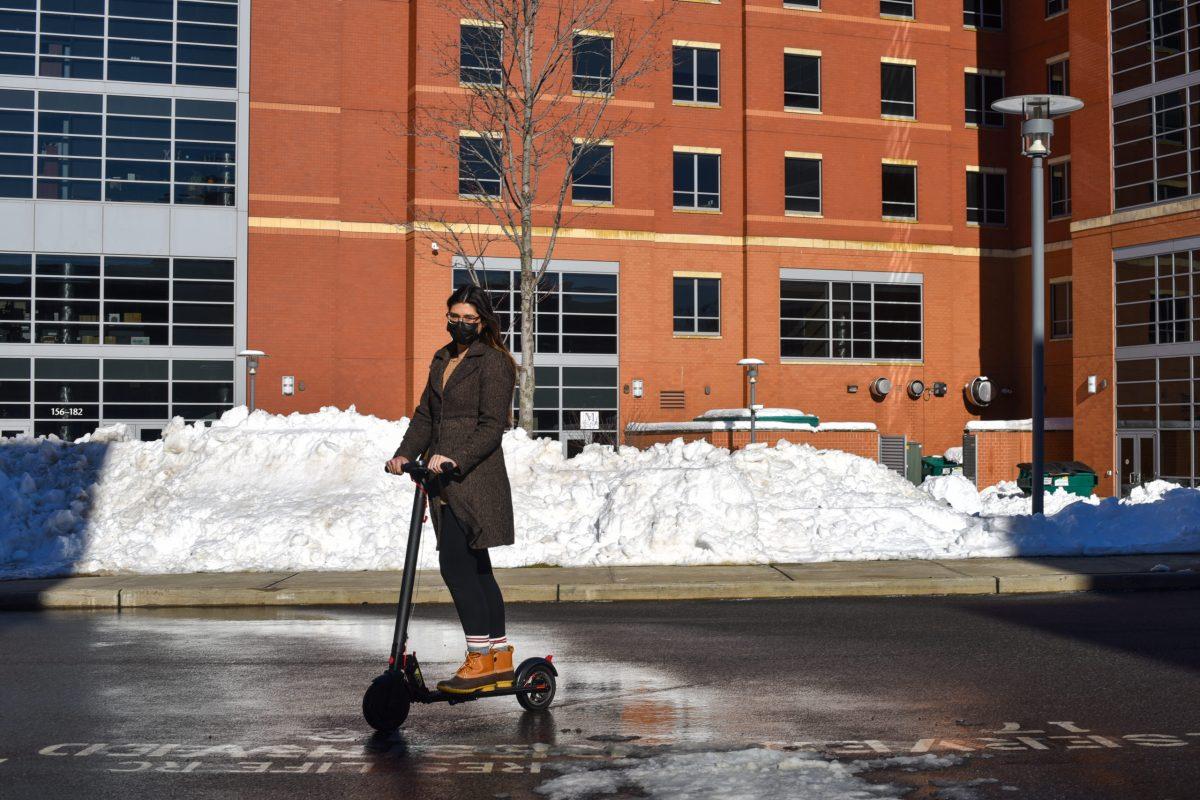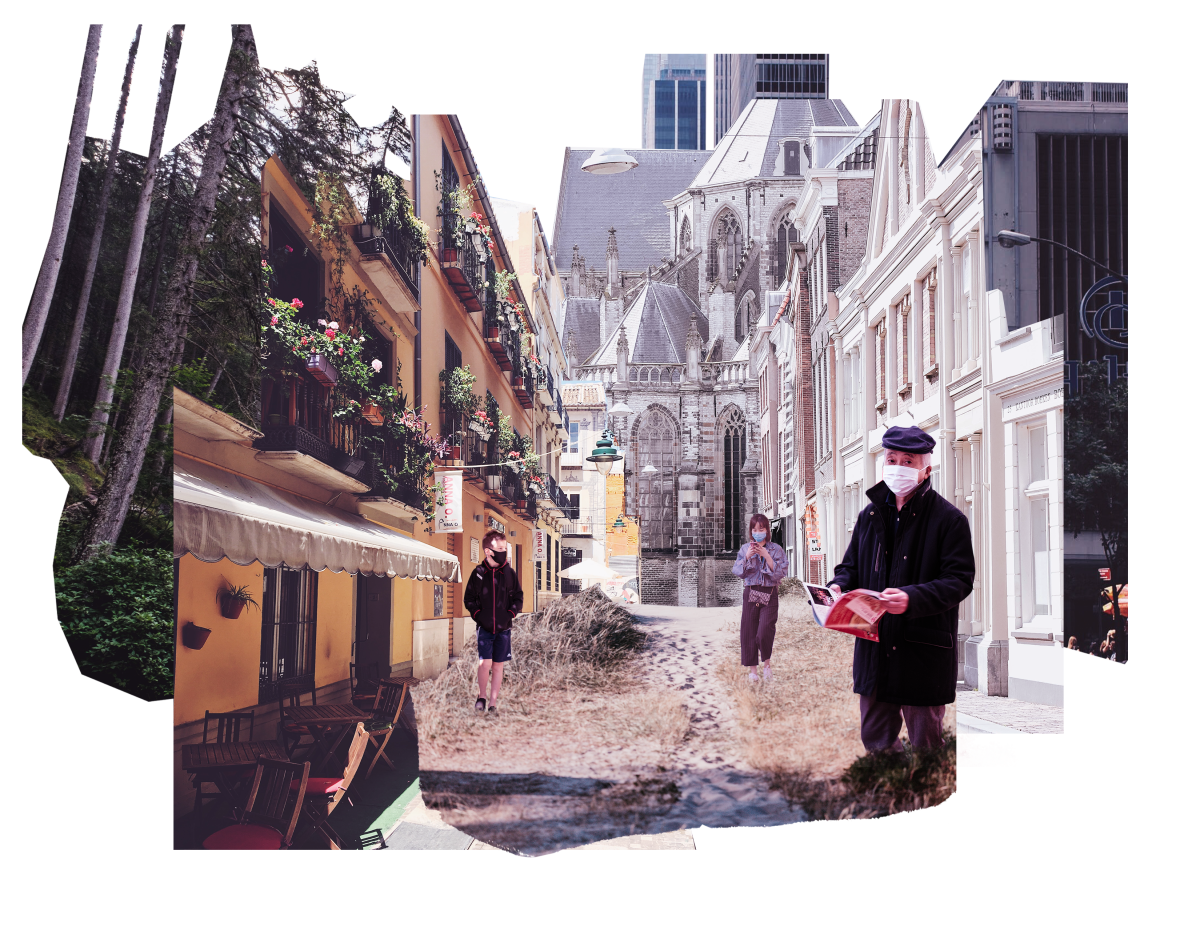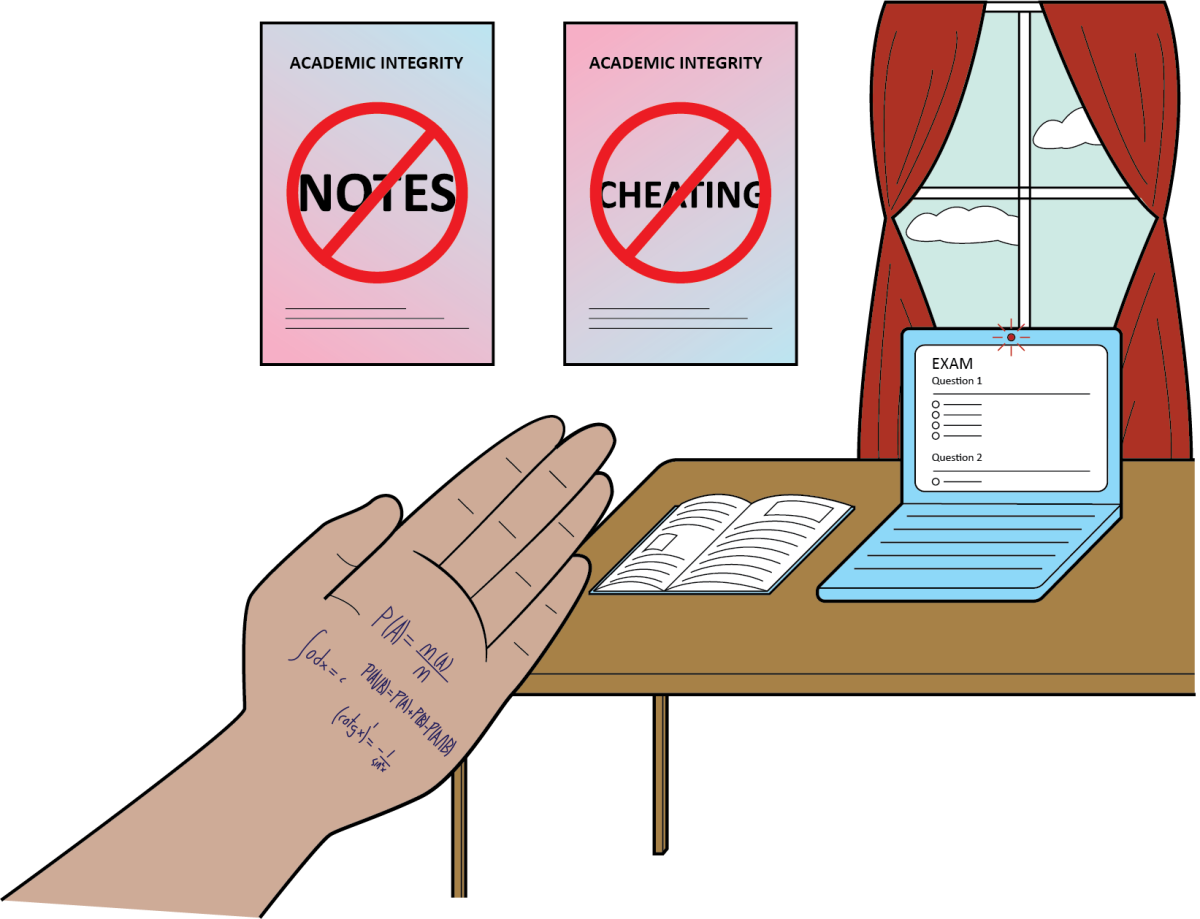Near the end of January, I was at the Wellness and Events Center (WEC) playing basketball. Not even an hour in, I landed hard onto the court, and I felt a pain in the back of my leg, like a hammer swung at full force right at my heel. I knew right away: I had ruptured my Achilles on my left leg. I ended up having to go to the hospital and stay overnight to mull over my decision on treatment options. The next day, after getting X-Rays and MRIs, I was released with a cast on my leg and a knee scooter for getting around on campus.
When I returned to campus, I did not initially realize the different ways in which my everyday life would change. On the first day, while heading to the Campus Center to get dinner from the dining hall, I hit a loose tile with my scooter and fell off. I landed on my freshly hurt leg, and a painful pulse ran down my whole leg. This made me realize that I needed to be more careful about how I moved around, leading me to investigate accessibility on NJIT’s campus.
Being temporarily handicapped has made me more aware of the difficulties in navigating the campus. The entrance ramps to Kupfrian Hall and Central King Building (CKB), for example, can be very difficult to use due to their notably steep angles. Tiernan Hall and Faculty Memorial Hall can be particularly difficult to access, especially when you want to travel between the two:if you are anywhere other than the first floor, you will need to take two elevator rides to get to the other side.
While the buildings can be somewhat frustrating to navigate, the walkways were where I had more immediate problems getting around. Very steep walkways are commonplace around campus, a byproduct of building the campus on a very hilly area of Newark. The Tiernan-WEC alley is an example, with the long and steep walkway making it very easy to pick up speed on the way down if you have no way to slow down. The sidewalk in front of Laurel Hall is the worst case of these walkways, with loose concrete slabs that have knocked me off of my scooter—though luckily I’ve been landing on my good leg. The walkway from Tiernan to Campus Center is not steep like the other walkways with issues, but it does contain many very loose tiles that pop almost entirely out of place if anyone steps on the right side—this has led to more falling on my part.
The sidewalks and walkways on campus are also uneven and have been hazardous in my experience, though there may be nothing else that the school can do according to Andrew Christ, NJIT’s Vice President of Real Estate Development and Capital Operations. When asked about what can done about the walkways, Christ said “The concrete pavers around campus are challenging based on the freeze thaw cycles and when we get excessive rain. Our grounds team works regularly to repair the loose or uneven pavers to prevent trip and fall accidents.”
Some of these issues can be quite frustrating, but is the campus technically handicap accessible? Christ said that “NJIT meets or exceeds the requirements for barrier free accessibility.” However, that does not mean it is convenient for those with handicaps to navigate. Kupfrian Hall has a less steep ramp on the side of the building that leads to the first floor. CKB also has a handicap accessible ramp on the street side of the building, leading you to the lower level and requiring an elevator to access the rest of the building.
While these buildings are technically handicap accessible, getting to these accessible ramps can be rather inconvenient and I would suggest that the school explore ways of making these ramps fully accessible. All of the walkways that are steep can be avoided by taking other paths, but each will add an appreciable amount of time to any trip—a commodity that is precious in the hectic schedule of a college student.
Despite current accessibility issues, handicap access has been a priority on campus since the 1970s. The entire campus was made wheelchair accessible thanks to the work of Frieda Zames, a former NJIT math professor who was handicapped due to childhood polio. She became a member, and eventually president, of Disabled in Action, a nonprofit civil rights organization with the goal of eliminating all discrimination against people with disabilities. Zames led a movement to get all MTA buses in New York fitted with lifts for handicap accessibility, along with successfully making many buildings in New York, including the Empire State Building, handicap accessible. Zames was very close to then president Saul Fenster, which aided in his decision to make the university fully accessible around 1978, years before the Americans with Disabilities Act of 1990.
Doris Fleischer, Zames’ sister and current NJIT Humanities lecturer said, “Frieda Zames was a pioneer in disabled civil rights. She is the reason that NJIT became a leader in handicap accessibility for universities all across the nation.” The two together wrote the book “The Disability Rights Movement: From Charity to Confrontation,” a historical survey which is still used today as a sort of disability textbook.
Being temporarily handicapped has made me more aware of the problems that many handicapped people face on an everyday basis. If NJIT is legitimately a leader in handicap accessibility as has been claimed, then there is much work left to be done for all institutions. Hopefully, this case can serve as an example applicable to other universities and public facilities, and maybe even be a catalyst for further change.
Photos by Katherine Ji






























